Craving a crunch in your salad but out of cabbages? No sweat! We’ve got you covered. The kitchen’s a playground, right?
And sometimes, you just gotta improvise. Think of this as your cheat sheet for those moments.
We’re about to introduce you to five rockstars that’ll slide into your recipes as smooth as butter.
Each one brings its own unique flair to the table.
From leafy greens that pack a punch to crunchy alternatives that’ll have you saying, “Cabbage, who?”
Gear up for a ride through our top picks that’ll save your dishes and keep things fresh.
What is Cabbage?

Cabbage is a leafy vegetable that is most commonly seen in shades of green and white.
It has a crunchy texture and a mildly sweet flavor.
Cabbage is part of the Brassica family, including broccoli, kale, and Brussels sprouts.
Cabbage is believed to have originated in Europe, though its exact origins are unknown.
It has been cultivated for thousands of years and was a staple food in many ancient cultures.
Cabbage was introduced to North America by European settlers in the 1600s.
Cabbage heads vary in size, but they are typically round or oval-shaped.
The leaves can be smooth or crinkled; they may be solid green, green with white streaks, or purple in color.
Inside the cabbage head, there are layers of tightly packed leaves.
The center leaves are usually the youngest and most tender.
Cabbage can be eaten raw or cooked.
When raw, it has a crunchy texture and a slightly sweet flavor.
It can be used in salads or as a topping for sandwiches and wraps.
When cooked, cabbage becomes more tender and takes on a milder flavor.
It is often used as an ingredient in soup or stew, or it can be roasted or sautéed as a side dish.
Here are some ideas on how to cook cabbage:
- Rinse the cabbage under cold water. Remove any damaged or wilted leaves.
- Cut the cabbage into thin strips or shred it using a knife or food processor.
- Boil the cabbage in water for 3-5 minutes, or until it is tender but still crisp. Drain the water and add salt and pepper to taste.
- Stir-fry the cabbage with oil and other ingredients like onions, garlic, and ginger. Serve with rice or noodles.
- Add shredded cabbage to soups or stews during the last 20 minutes of cooking.
- Raw cabbage can also be used in salads or as a wraps filling. Try adding shredded carrots, chopped apples, raisins, or nuts for extra flavor and nutrition.
The 5 Best Substitutes for Cabbage
If you don’t have cabbage on hand, or if you’re simply looking for some exciting alternatives, there are several vegetables that make great substitutes.
Here are five of the best:
1 – Napa Cabbage
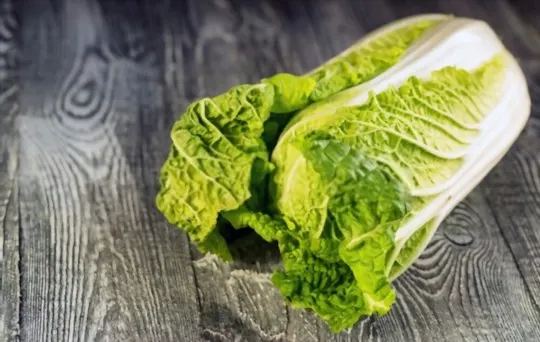
Napa cabbage is a type of Chinese cabbage that is often used in Asian cuisine.
It has a milder flavor than regular cabbage, and its thin, tender leaves can absorb flavors well.
When cooked, Napa cabbage has a firm but slightly crunchy texture.
It can be eaten raw or cooked and is often used as a wrapping for other ingredients.
While it is not as widely available as regular cabbage, Napa cabbage can usually be found in Asian markets or specialty stores.
If you are looking for a cabbage substitute that adds a touch of flavor to your dish, then Napa cabbage is a good option.
2 – Brussels Sprouts
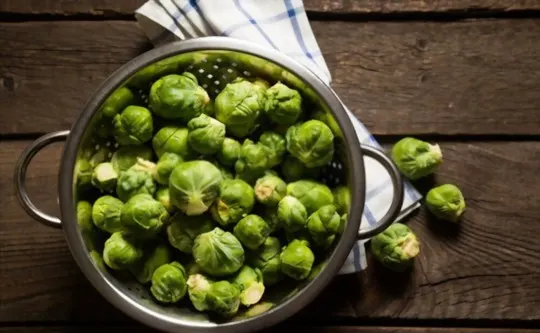
When it comes to Brussels sprouts, people tend to either love them or hate them.
These little vegetables have a strong flavor that can be pretty off-putting for some people.
They also have a firm texture that can be difficult to chew.
However, Brussels sprouts are actually quite versatile and can make an excellent substitute for cabbage in many recipes.
When cooked properly, they have a nutty flavor that pairs well with other earthy ingredients.
Additionally, their dense texture means that they hold up well to extended cooking times.
So if you’re looking for a unique vegetable to add to your next meal, consider giving Brussels sprouts a try.
3 – Savoy Cabbage
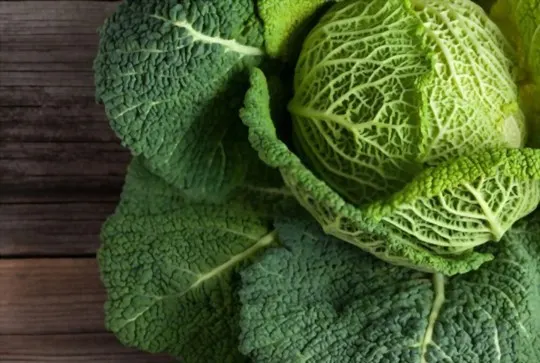
While most cabbages are round or oblong, savoy cabbage is distinguished by its deeply crinkled leaves.
The leaves range in color from deep green to pale yellow, and the compact heads can weigh up to four pounds.
When cooked, savoy cabbage has a tender texture and a mild, slightly sweet flavor.
It is often used in soups and stews, but it can also be eaten raw in salads or slaws.
Because of its delicate flavor, savoy cabbage is often substituted for regular cabbage in recipes.
However, it should be noted that savoy cabbage takes slightly longer to cook than its more common counterpart.
4 – Choy Sum
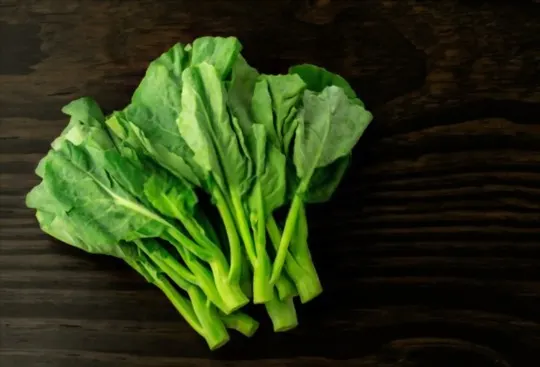
Choy sum, also known as yu choy, is a type of Asian green that is similar in appearance to cabbage.
It has dark green leaves and yellow flowers, and its stems are crunchy and slightly sweet.
When cooked, choy sum retains its crunchiness, although the bitterness of the leaves is softened.
Choy sum can be stir-fried, steamed, or used in soups or salads.
It pairs well with ginger, garlic, and oyster sauce.
If you’re looking for a cabbage substitute in your next Asian-inspired dish, give choy sum a try.
You’ll be pleasantly surprised by its unique taste and texture.
5 – Bok Choy
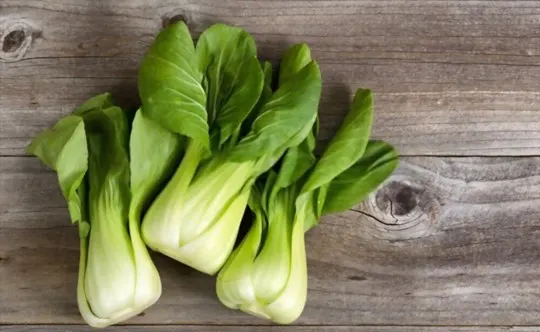
Bok choy is a type of Chinese cabbage that is characterized by its long, white stalks and dark green leaves.
It has a milder flavor than other cabbages, making it a good choice for those who do not like strong-tasting vegetables.
Bok choy is also relatively low in calories, making it a healthy option for those watching their weight.
In terms of texture, bok choy is crisp and crunchy, with a slightly fibrous texture.
It can be eaten raw or cooked and is often used in stir-fries and soups.
If you are looking for a vegetable that is similar to cabbage but has a milder flavor, then bok choy may be a good option for you.
Conclusion
In conclusion, cabbage is a versatile vegetable that can be used in a variety of recipes.
If you are looking for a cabbage substitute, then there are several options available to you.
Napa cabbage, Brussels sprouts, savoy cabbage, choy sum, and bok choy are all excellent choices that will add a unique flavor to your dish.
So if you’re looking for a way to add some extra flavor to your next meal, consider trying one of these cabbage substitutes.
Have you ever tried any of these vegetables before? What did you think of them? Let us know in the comments below.
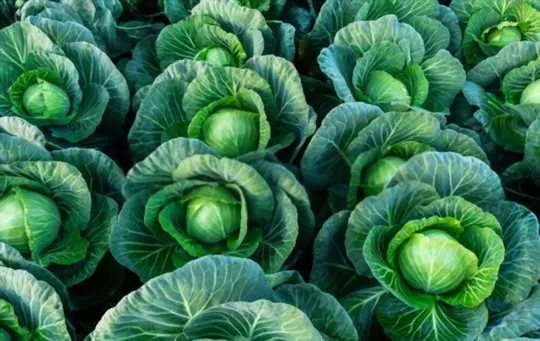
The 5 Best Substitutes for Cabbage
Ingredients
- Napa Cabbage
- Brussels Sprouts
- Savoy Cabbage
- Choy Sum
- Bok Choy
Instructions
- Pick your favorite substitute from the list above.
- Follow cooking directions for your selected substitute with the proper ratio of ingredients.

Andrew Gray is a seasoned food writer and blogger with a wealth of experience in the restaurant and catering industries. With a passion for all things delicious, Andrew has honed his culinary expertise through his work as a personal chef and caterer.
His love for food led him to venture into food writing, where he has contributed to various online publications, sharing his knowledge and insights on the culinary world. As the proud owner of AmericasRestaurant.com, Andrew covers a wide range of topics, including recipes, restaurant reviews, product recommendations, and culinary tips.
Through his website, he aims to inspire and educate fellow food enthusiasts, offering a comprehensive resource for all things food-related.

Leave a comment